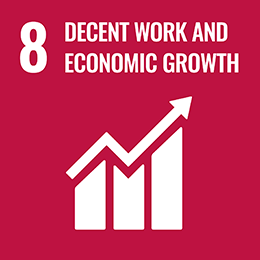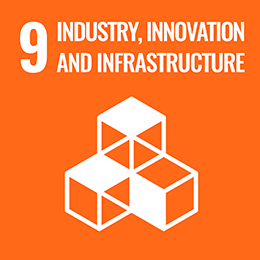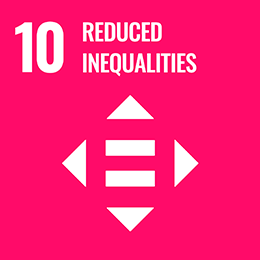Flying United

Share this article
One Continent. One dream.
"Over the millennia, small, simple cultures gradually coalesce into bigger and more complex civilisations, so that the world contains fewer and fewer mega-cultures, each of which is bigger and more complex" - Yuval Noah Harari, Sapiens: A Brief History of Humankind
As the new year begins, some reflect on the past, others proffer predictions for the future and Blackstone’s Byron Wein unveils his 10 Surprises for 2018.
We prefer to look at long-term themes and like to cut through the political noise to discern the long-term trends and macro-economic fundamentals. If we were to make a prediction, however, we foresee a Latino president in the Oval Office in the near future.
The start of that road was paved by Republican Senators Ted Cruz and Marco Rubio, who had a shot at becoming presidential nominees in 2015.
It has been a year since Donald Trump was sworn in as President of the USA. It was a victory won on anti-Hispanic rhetoric—one of the reasons Cruz and Rubio stayed silent about their Cuban roots—and the promise of a wall along the Mexican border.
Yet, the number of cranes and the amount of construction in Mexico City today speaks to a world that knows that the trend of history is for ever closer ties with their northern cousins.
The simple mathematics of modern democracy means that domestic politics in the USA will increasingly be influenced by Latino American citizens. In 2016, a record 27.3 million Latinos, 44% of which are Hispanic millennials, were eligible to vote.
America has reached peak imperialism: Obama’s ‘drones not boots’ strategy is not really so different from Trump’s (currently reversed) view that NATO is obsolete and unfit-for-purpose. Both policies speak to America’s tendency to turn its attention inwards.
Facing post-globalisation economic challenges, the USA is taking the ‘Pink Tide’ populist baton from the lands of the visionary Andean condor, which in turn are starting to soar on the thermal of non-dictatorial democracy (and a long-awaited recovery).
American isolationism is not new. Avoiding entangling foreign alliances to hone its focus nearer to home dates back to before the 19th century. But today, what does focusing closer to ‘home’ really mean?
There were an estimated 52.6 million people in the USA speaking Spanish in 2015, making it the country with more Spanish speakers than Spain (second only to Mexico with 121 million). By 2050, it is estimated that there will be 138 million Spanish speakers in the USA.
In 2016, not only were those 27.3 million Latinos eligible to vote, but they represented 12% of all eligible voters, according to Pew Research Center. Had all of those that could vote voted, could the outcome have been different?
We suggested that if the British youth had come out to vote, the Brexit outcome might have been different. The Latino vote is democratic but while Hillary won votes from the older generation, the Hispanic millennials were less enamoured. Winning the young Latino vote will be the political and economic game changer in the USA. Why?
Steve Bannon saw China as the single existential threat to the USA. He may now be gone from the public stage but his views permeate America’s populist heartlands and a part of the policy elites.
As fast as Trump severs historic ties and agreements, China’s President Xi Jinping is embracing them. Unlikely to risk a conventional war against China, the only way the USA can take back its place on the global stage is economically.
And Occam’s Razor has the answer. The USA needs to team up with Latin America and start to win that Latino vote.
When the Berlin Wall came down and Germany was unified, the country was flooded with skilled and educated labour that has driven the combined economies for the last 20 years.
Around the time was Trump was elected, we wrote extensively on why Latin America’s looming democracy was a trend to explore over a 10-year (plus a downturn) period. Regional GDP in Latin America, once home to the powerful Inca, Mayan and Aztec civilisations, is growing at an average of 2.4%, much the same as the USA, which is predicted to grow at 2.5% in 2018.
South America’s growth is driven by Argentina’s reforms poised to correct¹ the macroeconomic imbalances; Peru, Bolivia and Paraguay, which are expected to be the fastest growing regions in 2018; and Brazil finally exiting its recession.
Mining is likely to continue to be the backbone of the region’s growth, producing surpluses of iron ore (Brazil), copper (Chile) and gold, but Latin America also has agriculture, tourism, forestry as well as a bio-capacity surplus—more productive land and water than it needs to feed itself.
To dovetail with the USA’s Silicon Valley, Latin America has its own tech region in Colombia and Uruguay, as well as a thriving FinTech industry. Together, Brazil and Mexico have 410 FinTechs², with the former country at the forefront of financial innovation and Mexico driving regulation.
How the region will develop going forward is among the questions explored by this World Bank Group’s regional report Latin America and the Rising South Changing World, Changing Priorities.
The rise of the South is not a false dawn. And this is partly thanks China’s investments over the last 15 years, which have seen the GDP of South America, which was 20% of global GDP in the late 1990s, double to 40% by 2012.
China already has a firm economic foothold in America’s backyard: China-Latin America trade has gone from almost zero in 1990 to $270 billion in 2012 and in 2015, China pledged to invest $250 billion in the region over the next decade.
So if Trump continues to ignore Latin America, there is a good chance that China will happily step in primarily to maintain access to Latin America’s energy—it produces 12% of the world oil and 7% of the world’s natural gas—and also as a market for its infrastructure companies.
In fact, President Xi Jinping was heading to Latin America for his third trip since 2013³ just a week after Trump’s victory. That said, the lands of the Andean condor are acutely aware that current economic dependency on China is not healthy.
Not only do exports suffer when China’s growth slows, but a study by Boston University: China in Latin America: Lessons for South-South Cooperation and Sustainable Development found that trading with China generated 17% fewer jobs per dollar’s-worth of exports than did trade with other countries.
Of course, Latin America would naturally be diffident of American intentions as it felt exploited in the post-World War II era, but resurrecting a modern version of President John F. Kennedy’s Alliance for Progress, originally designed to improve relations between the two continents during this period, as odd as it may appear during a Trumpian presidency, is we think, the likely policy position in the years ahead.
For America to face up to the growing economic might of China, America needs to become the Americas and to a growing part of the electorate, the two continents combined are ‘home’.
There is a 2,000-year old Inca prophecy that says “When the Eagle of the North, flies with the Condor of the South, the spirit of the land she will re-awaken”. It makes sense, doesn’t it?
Photo: © Niki Natarajan 2017
Artist: Roo
¹ Argentina reveals tax cut proposals in pro-market reform drive (31.10.2017), Financial Times
² The irresistible rise of Latin America’s Fintechs (1.8.2017), The Banker
³ A Golden Opportunity (17.11.2016), The Economist
Article for information only. All content is created and published by CdR Capital SA. The views and opinions expressed in this article are those of the author(s). Information on this website is only directed at professional, institutional or qualified investors and is not suitable for retail investors. None of the material contained on this website is intended to constitute an offer to sell, or an invitation or solicitation of an offer to buy any product or service. Nothing in this website, or article, should be construed as investment, tax, legal or other advice.
Related articles
Brazil
Five world cups, but beaten 7-1 by Germany in 2014. The most abundant nature in the world and a literacy rate of almost 92%, but nearly 25% of the population live below the poverty line. Try telling a Brazilian that their economy has promise.

Latin America: Back to the future
With its history of hyper-inflation and populist governments, Latin America is frequently overlooked. Corruption, a shrinking economy and a deadly virus might sound like a script for a Hollywood movie, but could the region see democracy returning?

Going Venezuela
Einstein is said to have defined insanity as doing the same thing over again and expecting different results. In Wriston’s Law of Capital and Sleeper pins, A Ineichen has defined ‘going Venezuela’ as doing the wrong thing repeatedly with great conviction.





